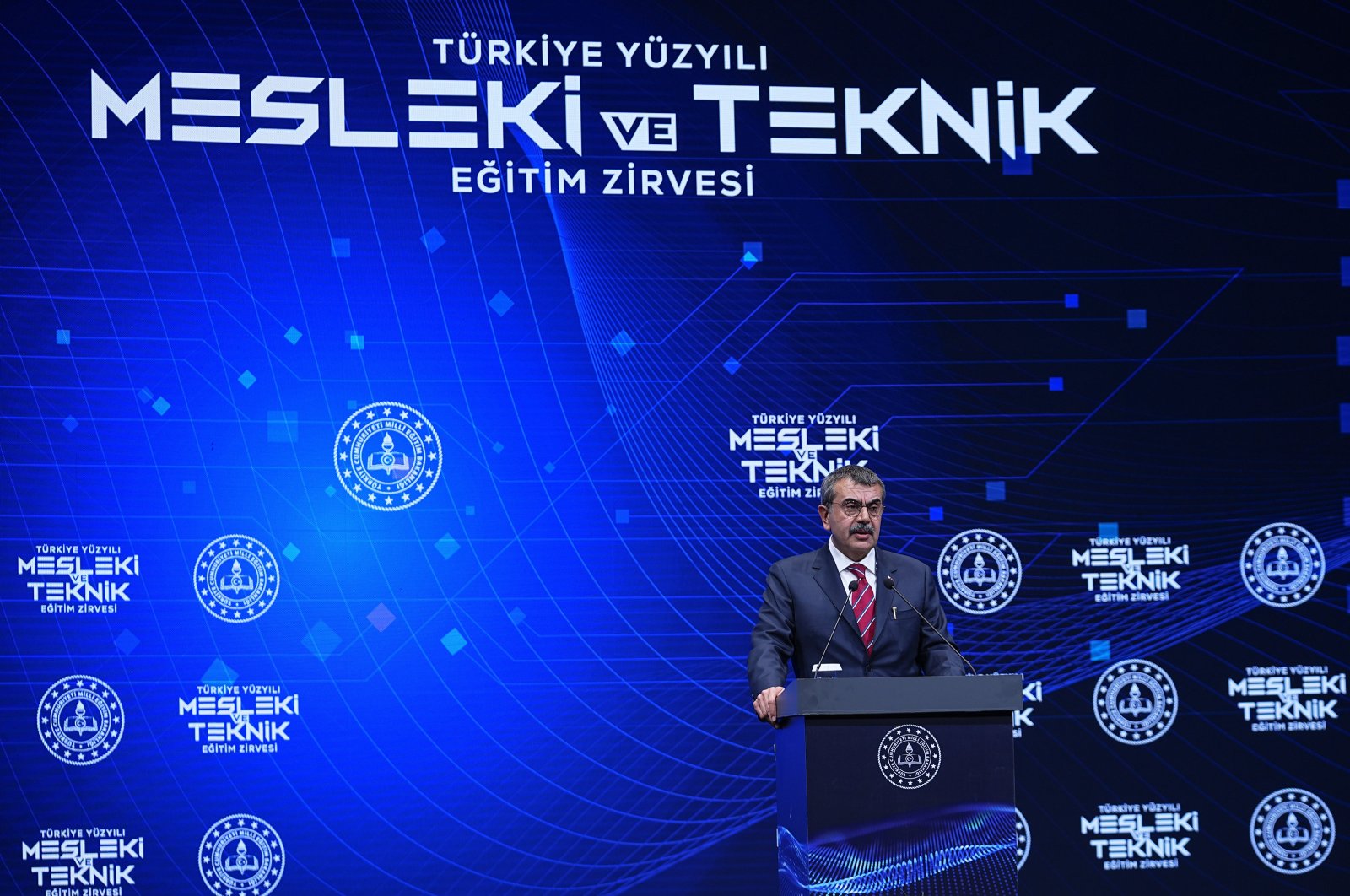Hattiesburg nonprofit tackles Mississippi’s adult literacy crisis with new program – WDAM-TV

Report on the Launch of an Adult Literacy Program in Hattiesburg, Mississippi and its Alignment with Sustainable Development Goals
Introduction: A Strategic Initiative for Inclusive Education
A new adult literacy program has been launched in the Pine Belt region by the Hattiesburg-based nonprofit, RISE. This initiative directly addresses a significant gap in educational services for adults who, despite being able to read words, lack the comprehension skills necessary for daily tasks, stable employment, and full civic participation. The program is a critical local effort to advance several United Nations Sustainable Development Goals (SDGs), primarily focusing on providing quality education and promoting lifelong learning opportunities for all.
The Literacy Deficit: A Barrier to Sustainable Development
Statistical Overview of the Challenge
The program addresses a severe and widespread issue of functional illiteracy in Mississippi, which presents a major obstacle to achieving social and economic progress. The scale of the problem is illustrated by the following data:
- Approximately 700,000 adults in Mississippi are considered functionally illiterate.
- 28% of the state’s adult population cannot read above a third-grade level.
- Two-thirds of adults in Mississippi cannot read texts beyond an eighth-grade level.
Socioeconomic Consequences and SDG Implications
This literacy gap has profound consequences that undermine progress across multiple SDGs:
- SDG 16 (Peace, Justice and Strong Institutions): As noted by program sponsor Shakita Taylor, functional illiteracy impedes access to justice. Individuals struggle to comprehend court orders and legal documents, which can lead to severe outcomes such as the loss of child custody.
- SDG 8 (Decent Work and Economic Growth): The inability to follow written instructions, complete job applications, or pass written driver’s license exams creates significant barriers to securing and maintaining decent employment, thereby hindering economic growth for individuals and the state.
- SDG 3 (Good Health and Well-being): Critical health and safety instructions can be misunderstood, as exemplified by a case where a mother’s inability to read formula instructions led to infant malnourishment.
- SDG 10 (Reduced Inequalities): The literacy deficit perpetuates a cycle of inequality, preventing a substantial portion of the population from participating fully in society and the economy.
The RISE Program: A Framework for Achieving SDG Targets
Advancing Quality Education (SDG 4)
The RISE initiative is fundamentally aligned with SDG 4, which aims to ensure inclusive and equitable quality education and promote lifelong learning. By targeting adults who read below a ninth-grade level, the program directly contributes to SDG Target 4.6: ensuring that a substantial proportion of adults achieve literacy and numeracy. The program provides a foundational pathway to further education and skills development, including GED classes and life-skills training already offered by RISE.
Promoting Economic Growth and Reducing Poverty (SDG 8 & SDG 1)
By equipping adults with essential literacy skills, the program aims to create a more skilled and marketable workforce. This directly supports SDG 8 by fostering productive employment and decent work. As stated by RISE board member Rick Conn and sponsor Shakita Taylor, enhancing the local workforce is essential for Mississippi’s economic development and can elevate the state’s economic standing. This, in turn, is a crucial step toward poverty reduction, as outlined in SDG 1.
Implementation and Sustainability Strategy
Capacity Building for Quality Instruction
To ensure the program’s effectiveness and sustainability, RISE is prioritizing the development of a qualified instructional team. Key elements of this strategy include:
- Training instructors and volunteers in the Laubach method, a nationally recognized and highly effective approach for teaching reading to adults.
- Covering the full cost of training for volunteers to build a robust support system.
- Aiming to certify 15 instructors in preparation for the program’s official launch in 2026.
Inclusive Community Engagement
Recognizing the courage it takes for adults to seek help, RISE has designed an accessible enrollment process. Interested individuals can simply indicate their interest on the organization’s website, after which a staff member will follow up personally. This approach removes the barrier of filling out complex forms and fosters a supportive environment conducive to learning.
Conclusion: Breaking Systemic Cycles for a Sustainable Future
The RISE adult literacy program is more than an educational service; it is a strategic intervention designed to break the systemic cycle of illiteracy that contributes to poverty, inequality, and limited economic opportunity. By investing in adult education, the Hattiesburg community is taking a decisive step toward building a more resilient, equitable, and prosperous future. This initiative serves as a powerful local model for achieving global Sustainable Development Goals, demonstrating that foundational skills like literacy are essential for empowering individuals and transforming communities.
1. Which SDGs are addressed or connected to the issues highlighted in the article?
-
SDG 4: Quality Education
This is the most prominent SDG addressed. The entire article focuses on the launch of an adult literacy program by the nonprofit RISE to combat functional illiteracy in Mississippi. The program’s goal is to “provide a foundation for reading, employment and lifelong education,” which directly aligns with ensuring inclusive and equitable quality education and promoting lifelong learning opportunities for all.
-
SDG 8: Decent Work and Economic Growth
The article explicitly links literacy to employment and economic prosperity. It notes that functional illiteracy makes it difficult to “hold a job.” Conversely, the literacy program is expected to “strengthen the workforce and the economy.” Attorney Shakita Taylor is quoted saying, “If this program comes… then our base line of marketable adults goes up,” directly connecting education to creating a skilled workforce for sustainable economic growth.
-
SDG 1: No Poverty
While not mentioned directly, the goal of ending poverty is an underlying theme. The article describes how illiteracy creates barriers to employment and economic stability. By providing adults with foundational skills, the program aims to “help elevate people’s statuses” and make them “more marketable.” This empowerment is a critical step in breaking the cycle of poverty that is often linked to a lack of education and stable employment.
-
SDG 10: Reduced Inequalities
The program targets a vulnerable and disadvantaged group: “functionally illiterate” adults who read below a ninth-grade level. By providing them with essential skills, the initiative aims to reduce the educational and economic inequalities they face. The article highlights how these literacy barriers prevent adults from participating fully in society, such as being unable to pass a written driver’s test or understand court orders. The program promotes social and economic inclusion for this marginalized group.
2. What specific targets under those SDGs can be identified based on the article’s content?
SDG 4: Quality Education
-
Target 4.6: By 2030, ensure that all youth and a substantial proportion of adults, both men and women, achieve literacy and numeracy.
The article is centered on this target. The RISE program is specifically designed to address the fact that “Thousands of Mississippi adults can read words but struggle to understand their meaning.” The initiative’s core mission is to improve adult literacy rates among the “700,000 Mississippians are considered functionally illiterate.”
-
Target 4.4: By 2030, substantially increase the number of youth and adults who have relevant skills, including technical and vocational skills, for employment, decent jobs and entrepreneurship.
The article connects literacy directly to employability. It states that the literacy gap makes it difficult to “hold a job” and that the program will help adults become “more marketable.” The goal is to create a “skilled workforce,” which aligns with providing adults with relevant skills for employment.
SDG 8: Decent Work and Economic Growth
-
Target 8.5: By 2030, achieve full and productive employment and decent work for all women and men…
The article emphasizes that improving literacy is essential for strengthening the workforce. The program aims to increase the number of “marketable adults” who “can do the jobs in the state.” This directly supports the goal of achieving productive employment for a segment of the population that is currently at a disadvantage.
SDG 10: Reduced Inequalities
-
Target 10.2: By 2030, empower and promote the social, economic and political inclusion of all…
The program is designed to empower adults who are excluded from opportunities due to their literacy level. The article gives examples of this exclusion, such as parents losing custody of children or individuals being unable to get a driver’s license. By teaching them to read and understand, the program promotes their inclusion and ability to “thrive.”
3. Are there any indicators mentioned or implied in the article that can be used to measure progress towards the identified targets?
SDG 4: Quality Education
-
Indicator for Target 4.6: The article provides several baseline statistics that can be used as indicators to measure progress. These are directly related to the official indicator 4.6.1 (Proportion of population achieving at least a fixed level of proficiency in functional literacy).
- Number of functionally illiterate adults: The article states, “About 700,000 Mississippians are considered functionally illiterate.” A reduction in this number would indicate progress.
- Proportion of adults below specific reading levels: The article mentions that “28% [of the Mississippi adult population] cannot read above a third-grade reading level” and “two in three adults cannot read above an eighth-grade level.” Improvement in these percentages would be a key measure of success.
SDG 8: Decent Work and Economic Growth
-
Indicator for Target 8.5: While the article does not cite official employment statistics, it implies an indicator related to the workforce.
- Proportion of “marketable adults”: The article quotes a program sponsor who says, “our base line of marketable adults goes up.” This suggests that a potential indicator would be the change in the employment rate or job-readiness of the program’s participants.
General Program-Level Indicators
- Number of trained instructors: The article mentions a specific goal: “RISE is covering the cost of training for volunteers and hopes to have 15 certified to help when the program officially launches.” This serves as a capacity-building indicator.
- Number of program participants: The article discusses the sign-up process and preparing for “big numbers in 2026,” implying that the number of adults enrolled in and completing the program will be a key metric of its reach and success.
4. Table of SDGs, Targets, and Indicators
| SDGs | Targets | Indicators (Mentioned or Implied in the Article) |
|---|---|---|
| SDG 4: Quality Education |
4.6: Achieve literacy and numeracy for all youth and a substantial proportion of adults.
4.4: Increase the number of adults with relevant skills for employment. |
|
| SDG 8: Decent Work and Economic Growth | 8.5: Achieve full and productive employment and decent work for all. |
|
| SDG 1: No Poverty | 1.2: Reduce at least by half the proportion of people living in poverty. |
|
| SDG 10: Reduced Inequalities | 10.2: Empower and promote the social and economic inclusion of all. |
|
Source: wdam.com
What is Your Reaction?
 Like
0
Like
0
 Dislike
0
Dislike
0
 Love
0
Love
0
 Funny
0
Funny
0
 Angry
0
Angry
0
 Sad
0
Sad
0
 Wow
0
Wow
0
















































:focal(1500,1000)/https://media.globalcitizen.org/a6/9a/a69a4720-d8a1-4715-b596-18738d03c05c/rotary_polio_hero_image.jpg?#)







/countries/sri-lanka/photo-credit---dmc-sri-lanka.tmb-1200v.jpg?sfvrsn=dc298bcc_1#)


















